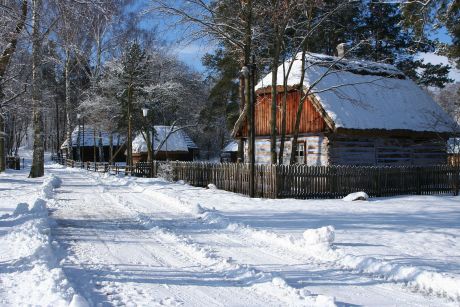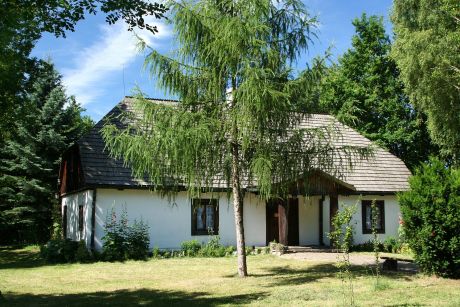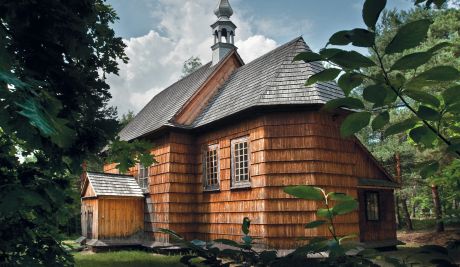“Paltrak” constituted the youngest structural variation of the windmills, since they were inven - ted in the 19th century. In comparison to post mills, they had an improved system of building rotation, which consisted in the fact that the body moved upon rollers which went through a circular track instead of moving upon the post. The whole mechanism was structurally supported by a pole placed inside.
The Museum’s “paltrak” was constructed in Solec upon the Vistula River where it was purchased from Gniewoszów in 1920 by Wik - to ria Przeor. At the moment of purchase it was equipped with stones for the production of feed (“ospa”) and stones, the so-called “fran cuzy” in order to mill the crops into the flour. The stones cooperated with the bag sifter. Current equipment and appearance of the windmill results from the modernization it has undergone in the middle of the 20th century. In 1935 it was equipped with an elec tric motor, as the result of which the propellers and the shaft were removed soon after. In 1939 the stone was replaced with a roller mill purchased in Warsaw in the company of Łagiewski, a well-known plant which manufactured milling devices. Ten years later, in 1949 the windmill underwent another mo der nization. New shafts were provided and its side were developed with rooms for control and drive equipment and dust chamber. In 1953 the windmill was natio nalized and became owned by the Com - mune Association “Samopomoc Chłopska” (Peasant Self-Sup port) in Gniewoszów. The windmill functioned until 1978.











